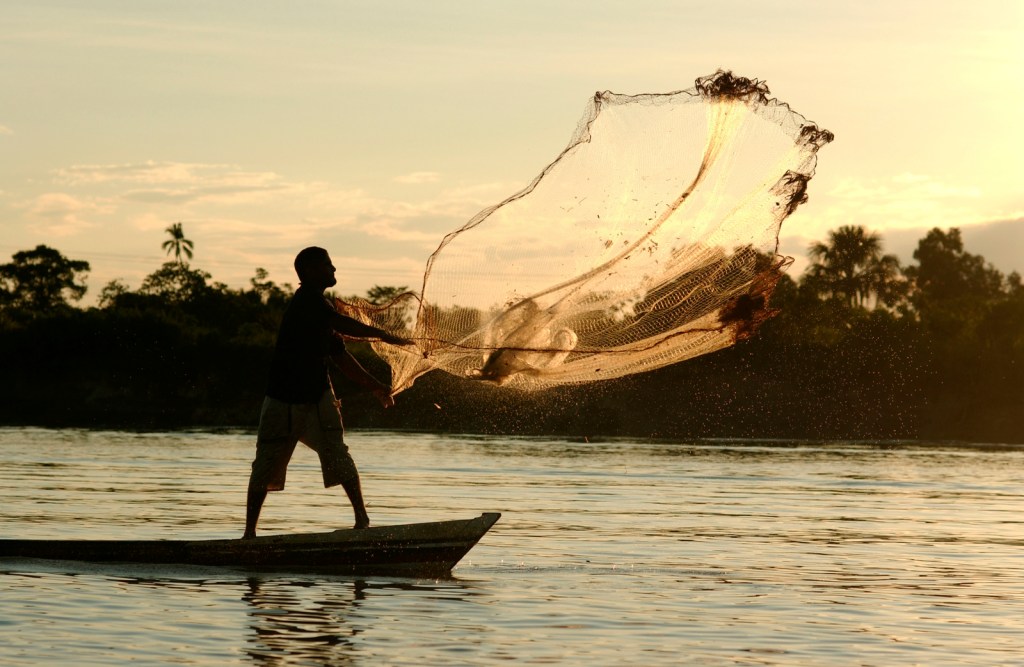My boot camp in post-humanitarian crises was Peace Corps Nicaragua in 1996. I was concerned that the general public would associate me with the embargos and violence sanctioned by the United States government in the 1980’s, but my host family assured me they knew the difference between the pueblo and gobierno, the people and its government. This held true across the country.
What I saw during those two years I lived in Santo Tomás, Chontales were unexpected juxtapositions, the effects of the cold war on both people and nature.
I saw crumbled drinking water infrastructure with the option for hauling water from the cyanide-and-mercury infused Río Mico downstream from the Santo Domingo gold mines. Well-preserved rainforest rose like an island amid agricultural desertification because the hilltop was littered with landmines. Like the country’s president at that time, my collaborators in the ministry of education and comedor infantil who helped found an environmental education and research library for school children were highly educated and empowered women. At the same time, gunfire and kidnappings by the self-proclaimed re-contras interrupted my environmental education charlas in remote regions.
Each of these site-specific contrasts sit at the nexus of human well-being, sustainable economic development, and nature conservation. And science could be poised to help find broad-scale solutions to these problems.
I’ve worked to bridge nature conservation with other sectors for more than 20 years, and if there is one thing I have learned it’s that we are not all that good at talking to each other; scientists among disciplines, sector among sector. Different ways of knowing often make working across disciplines hard to do, but a little emotional intelligence can go a long way.
Knowing how and when to work together is hard. Imagine you are the head of a massive relief program: UNICEF, FEMA, Mercy Corps, Red Cross, Catholic Relief Services, to name a few. The last thing you want to do when mobilizing tons of food into a disaster zone is see your staff snatching back rations saying; “I’m sorry, I just realized this food was not sourced from environmentally sustainable agriculture.” Or you are siting refugee camps during floods of biblical proportions. The water is cresting, children are wailing, and meanwhile the limnologist, freshwater ecologist and mussel specialist are quarreling about which of the most sensitive nursery areas for a rare mussel should be avoided.
Wouldn’t it be better if we figured how to make the bulk of emergency food supplies environmentally sustainable, or create global and regional emergency maps that protect both people and ecologically sensitive areas?
It is also hard to be empathetic to other points of view in a crisis. It is possible to design good science and analyses to get some of these answers in place in advance and in a form that can be used during a crisis. We scan global geopolitics to predict new conflict and biodiversity and ecosystem trends to prioritize conservation. Preparation across sectors government, private, non-profit, academic) and disciplines (social science, ecology, economics) — also referred to as transdisciplinary work — can both inform sustainable development and peace building to prevent crisis and have answers at hand that also promote nature conservation when urgency arises.
SNAPP – Solutions for Nature & People
What’s the solution? One answer can be found in the Science for Nature and People Partnership (SNAPP), which has just released its 2016 call for proposals. SNAPP was founded in 2013 by The Nature Conservancy, the Wildlife Conservation Society, and the National Center for Ecological Analysis and Synthesis at the University of California, Santa Barbara. SNAPP funds and convenes multidisciplinary and cross-sector collaborations to catalyze innovative solutions for people and nature with a clear pathway to implementation.
I’ve seen these working groups come to trans-disciplinary epiphanies in three ways, mirrored in the three forms of knowing: distributional, procedural, and interactive.
A wide distribution of policy makers and bi- and multi-lateral institutions in the conversations with scientists ensured that new analysis and decision support tools from the Water Security Working Group are designed with the users’ needs front and center. Neutral territory provided by the SNAPP platform allowed the Amazon Waters Working Group to set up a procedure to work with proprietary information from infrastructure and mining to come up with solutions that benefit everyone while preserving privacy and for-profit business models. And interactions facilitated by the Faiths and Conservation SNAPP workshop allowed insight into shared objectives and different ways of knowing.
Part of me still wants to collaborate in solving those tangible, site-based problems I experienced 20 years ago as a Peace Corps Volunteer in Nicaragua. But I am inspired by the possibilities for systemic change that I see brimming in the SNAPP working groups. And I am grateful for scientists willing to listen and try to understand across disciplines and crisis workers from biodiversity to humanitarian sectors who are willing to pause, think together and return to the fray better informed to make a lasting difference.




Join the Discussion